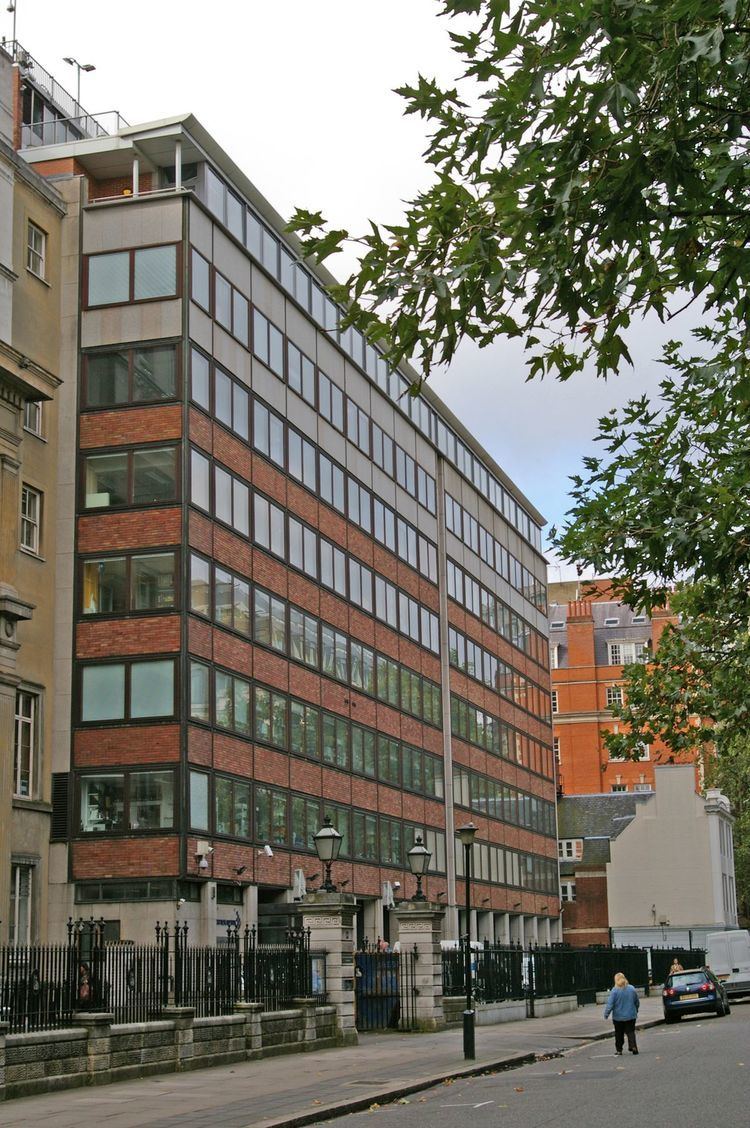London borough City of Westminster | ||
 | ||
Similar Westminster Abbey, Regent's Park, Statue of the Viscount, St James's Park, Royal Courts of Justice | ||
Nobel prize winner sir tim hunt london research institute uk
The Cancer Research UK London Research Institute (LRI) was a biological research facility which conducted research into the basic biology of cancer. The LRI officially became a part of the Francis Crick Institute ("the Crick") in April 2015, and research is transferring to the new Crick building from autumn 2015 to spring 2016.
Contents
- Nobel prize winner sir tim hunt london research institute uk
- Lincolns Inn Fields laboratories
- Clare Hall laboratories
- Future
- References
The LRI has its origins as the principal research facilities of the Imperial Cancer Research Fund (ICRF), which was founded in 1902 as the first specialist cancer research charity in the United Kingdom. When the ICRF merged with Cancer Research Campaign in 2002 to form Cancer Research UK, the LRI was the largest core-funded institute in Cancer Research UK's portfolio. At the time of its transfer to the Crick, the LRI housed 46 research groups based at two locations: Lincoln's Inn Fields (LIF) laboratories in central London, and Clare Hall (CH) laboratories on London's outskirts at South Mimms, Hertfordshire.
The LRI had an international reputation for cancer research. Themes of research included signal transduction (biology of tissues and organs, and molecular cell biology) and genome integrity (cell cycle and chromosomes and DNA repair). At the time of its transfer to the Crick, 11 of the scientific staff were Fellows of the Royal Society and two had received knighthoods. During its history, the LRI saw four of its researchers receive the Nobel Prize.
Lincoln's Inn Fields laboratories
The laboratories are associated with a number of major scientific discoveries, including the discovery of the p53 gene, the link between growth factors and oncogenes; the identification of mammalian homologues of the cell cycle regulator cdc2; and the identification of the sex-determining gene SRY.
In 1975 Dr Renato Dulbecco, then Deputy Research Director of the Laboratories shared the Nobel Prize for Physiology or Medicine for his work on the interactions between DNA tumour viruses and cells. In 2001, the Nobel Committee again honoured the Lincoln's Inn Fields Laboratories with the award of a share of the Prize to Dr Paul Nurse, then Chief Executive of Cancer Research UK and a group leader at the Lincoln's Inn Fields laboratories for his work on the cell cycle.
Clare Hall laboratories
The Scientific Director of the Clare Hall laboratories is Dr John Diffley. The laboratories are housed on a purpose-built research campus adjoining Clare Hall Manor (a Grade II listed building) located approximately 15 miles to the north of central London in the Hertfordshire greenbelt.
The Clare Hall laboratories were officially opened in 1986. Under the guidance of Director Tomas Lindahl, Clare Hall became, and remains today, a leading centre for studies of DNA repair, recombination and replication, cell cycle control and transcription. In addition, the site has provided scientific support services of increasing sophistication over the years.
Dr Tim Hunt, a Clare Hall Group Leader, shared the 2001 Nobel Prize in Physiology or Medicine with his Lincoln's Inn Fields colleague, Dr Paul Nurse.
Tomas Lindahl shared the 2015 Nobel Prize in Chemistry (with Paul L. Modrich and Aziz Sancar) for work on DNA repair.
Future
Research will transfer to the new Francis Crick Institute building in Somers Town, London, in 2015/16.
The Lincoln's Inn Fields building has been sold to the London School of Economics, while Clare Hall is offered for sale.
